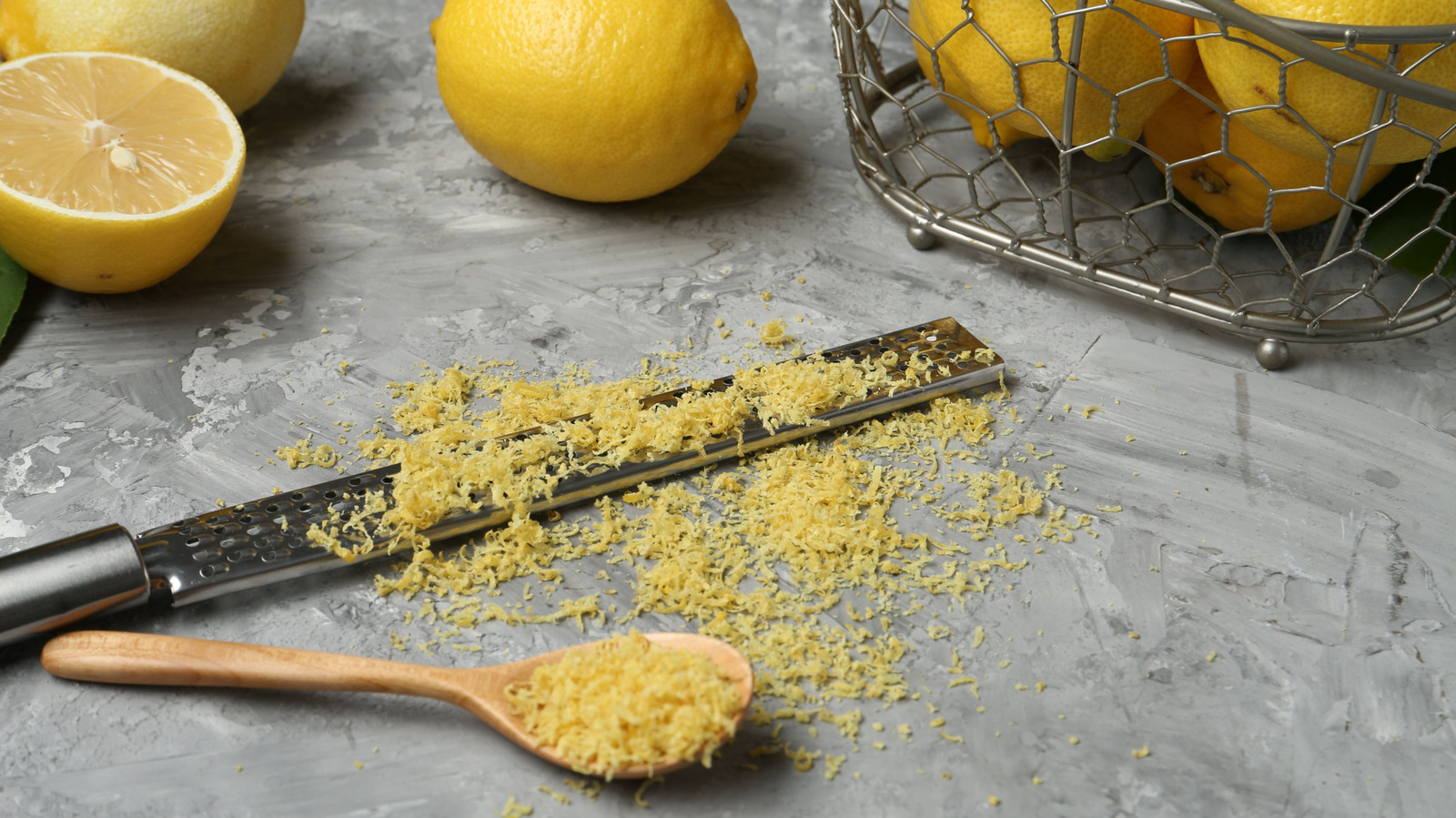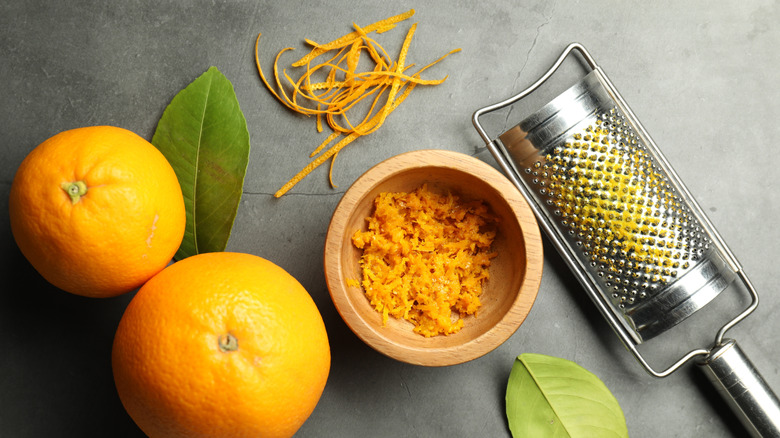We know what you’re thinking — unlike a food processor or espresso machine, a zester is pretty straightforward as far as kitchen gadgets go. Have zester, make zest. But depending on the type of tool you’re using, there’s a very good chance you’re holding your zester upside down.
Citrus zest is a sneaky recipe game changer. While orange, lemon, lime, and grapefruit juice add a tartness to your drink, dinner, or dessert, it’s the citrus peel, and especially the aromas released from its oils, that give your key lime pies, lemon bars, and even chocolate chip cookies a punch of citrus flavor. That’s why using your zester correctly is so important. After all, a little citrus zest goes a long way.
If your go-to gadget for zesting is a Microplane grater, here’s where you’re likely going wrong: Rather than holding the tool with the sharp holes facing upward and then running your citrus in a linear motion along the top, flip the microplane over. Now that the sharp teeth are facing your kitchen counter or cutting board, run your fruit along the microplane from underneath. The zest will collect along the top of your microplane, giving you an exact sense for how much more you need. Once you have enough, easily tap all your zest into your bowl or pan. Just be sure you’re not zesting too deeply, the white pith between the peel is quite bitter and will change the flavor of your recipe.
A few more tips for expert zesting
If you feel adept at using your microplane, expert chefs have an even more effective method for generating zest. Of course, it certainly works to run your lemon or orange in a straight line down your microplane, but there isn’t a citrus on this planet that’s perfectly straight. You’ll have to keep adjusting the position of your fruit’s peel to avoid covering the same ground and getting too much of the pith. And, if you need a lot of zest, you’re likely wasting precious peel between your uneven strips of zest.
Instead, try running your microplane down the sides of your fruit as if you’re peeling it with a paring knife or vegetable peeler. By working from top to bottom and rotating the angle of the fruit as you go, you can cover the citrus’s surface area more efficiently, long strip by long strip. If you don’t need to slice and juice that piece of citrus, you can save it and its peel for later use. After all, citrus peels are the secret to the best Jell-O shots. Plus, if a recipe calls for the zest of half an orange, for example, you can clearly see how much of the orange you’ve zested. Give both techniques a try and see which microplane method works best for you.





